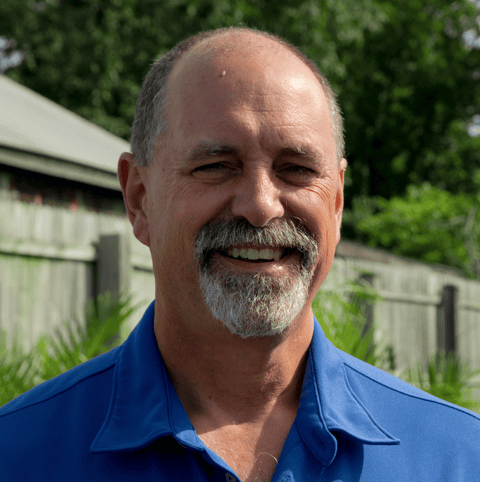
Green Roofs on Commercial Buildings: Everything You Need to Know
Poor green roofs. They’re up there working hard to save energy, keep the city cool, soak up rainwater — and everybody forgets about them.
Maybe you’re suddenly remembering your green roof right now.
“Oh, yeah. I wonder if it needs anything.”
It might. Green roofs on commercial buildings are more popular than ever. And they need occasional maintenance to thrive.
What do these eco-friendly roofs need? Why have one? What’s involved in commercial green roof maintenance?
Let’s check it out.
If You’re in DC, There’s a Green Roof Nearby
Green Roofs for Healthy Cities, a green roof industry association, named Washington DC the city with the greatest square footage of green roof installations back in 2017. The District registered more than 1 million square feet of green roofs that year, and the number has been steadily growing since then.

Commercial green roof systems have become part of the city’s infrastructure. They help commercial developers meet Washington DC’s “Green Area Ratio Rule,” which requires all new buildings that require a Certificate of Occupancy meet a specific ratio of landscape elements to land area.
Green Roofs on Commercial Buildings: What Maintenance Do They Need?
Green roof maintenance tends to get neglected.
Not all commercial green roofs are accessible to building residents or employees. Many are installed just for environmental reasons. Out of sight, out of mind.

But there are thousands of plants up there, in hot sun and wind. What green roof maintenance is needed?
Seasonally
- Remove weeds and invasive plants regularly during the first 18 months and at least twice a year after plants are established.
- Inspect the drains and remove any debris that’s blocking them. Water needs to drain properly to get the benefits of a green roof, and standing water can invite insects to breed.
Annually
- Check the entire system to ensure the green roof is working properly.
- Inspect the irrigation system, if there is one. Irrigation systems are made specifically for commercial green roofs, but few have them. It’s more common to arrange for irrigation visits from a landscaping company.
- Check the plants: do any need to be replaced or added? A commercial green roof should be at least 80% covered in plants.
- Send a soil sample out for testing.

As Needed
- Water the green roof’s soil and vegetation during the first 18 months and during extreme drought. Even drought-tolerant plants like sedum can suffer in extreme drought.
- Only fertilize during the plants’ establishment period, and sparingly. Since a green roof is a stormwater management practice, you don’t want any excess nutrients leaving the roof.
Why Install a Commercial Green Roof?
So many reasons:

Noise Reduction
Plants, soil, and air trapped in the soil are great acoustic insulators. Tests show that green roofs can reduce indoor sound by as much as 40 decibels — a great perk for city dwellers bombarded by noise from airports, industry, trains and traffic.
Tax Credits
Building owners can often take advantage of tax credits for installing green roofs, a great reason for commercial green roof installation.
Cost Savings
Commercial green roofs reduce utility bills by providing more insulation, so you’re not losing heat through the roof.

Reduction Of Stormwater Runoff
The soil in green roof systems acts like a sponge and absorbs excess rain water, and the plants naturally filter pollution before returning it to the groundwater system.
Winged Creatures Love Them
Rooftop plants create helpful habitat for butterflies, insects and songbirds.
They’re Cool. Literally.
Cities are hot, with less plant material around to help cool things down. Most roofs are black tar. They really absorb heat.
“Urban heat island effect,” is a real thing, the temperature difference between urban areas and their rural surroundings. Commercial green roof plants help by cooling the air, slowing air movement and filtering pollution.
They’re Pretty
Who wouldn’t rather look out onto an oasis of green plants than a sea of hot shingles or asphalt?
Green Roof Installation Is Pretty Simple
First, roofers come in to waterproof the roof, if it isn’t already suitable. They do a flood test, flooding the roof and letting the water stand for a few days to see if there are any leaks.
And they check to see if the roof can bear the extra weight of a rooftop garden.

Then installers bring trays of plants up to the roof. The plants come in pre-planted modules designed to connect together, containing everything they need, from soil, drainage layer and fertilizer.
Modules are available in a variety of soil depths, to support a broad range of plants and roof loading conditions.
The most common green roof plant is sedum, a drought-resistant ground cover with water-absorbing leaves.They thrive in dry heat and don’t need much water.
Native plants are common, too, as they require little care once established.
Need Commercial Green Roof Maintenance? Trust Level Green
How’s your commercial green roof doing up there? No idea?
It might be time for a check up.
Level Green provides green roof maintenance in DC, Maryland, and Virginia for our commercial landscaping customers.
If you’re not already a Level Green Landscaping client, we’d love to add you to our growing list of happy customers.
Our focus is on commercial properties like offices, mixed-use sites, HOAs, municipalities and institutions in Maryland, Washington DC and parts of Virginia.
Contact us at 202-544-0968. You can also request a free consultation online to meet with us one-on-one.
We’d love to hear from you.

Douglass Delano
Doug Delano (and Bill Hardy) opened Level Green Landscaping LLC in 2002 to offer Washington DC, Maryland and Virginia reliable commercial landscape maintenance services.

